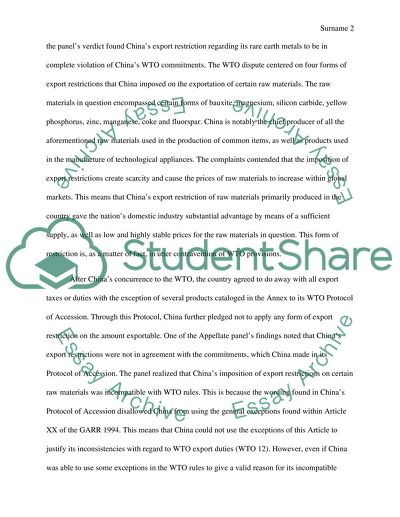Cite this document
(“World Trade Organization (CHINA MEASURES RELATED TO THE EXPORTATION OF Essay”, n.d.)
World Trade Organization (CHINA MEASURES RELATED TO THE EXPORTATION OF Essay. Retrieved from https://studentshare.org/miscellaneous/1601143-world-trade-organization-china-measures-related-to-the-exportation-of-various-raw-materials
World Trade Organization (CHINA MEASURES RELATED TO THE EXPORTATION OF Essay. Retrieved from https://studentshare.org/miscellaneous/1601143-world-trade-organization-china-measures-related-to-the-exportation-of-various-raw-materials
(World Trade Organization (CHINA MEASURES RELATED TO THE EXPORTATION OF Essay)
World Trade Organization (CHINA MEASURES RELATED TO THE EXPORTATION OF Essay. https://studentshare.org/miscellaneous/1601143-world-trade-organization-china-measures-related-to-the-exportation-of-various-raw-materials.
World Trade Organization (CHINA MEASURES RELATED TO THE EXPORTATION OF Essay. https://studentshare.org/miscellaneous/1601143-world-trade-organization-china-measures-related-to-the-exportation-of-various-raw-materials.
“World Trade Organization (CHINA MEASURES RELATED TO THE EXPORTATION OF Essay”, n.d. https://studentshare.org/miscellaneous/1601143-world-trade-organization-china-measures-related-to-the-exportation-of-various-raw-materials.


